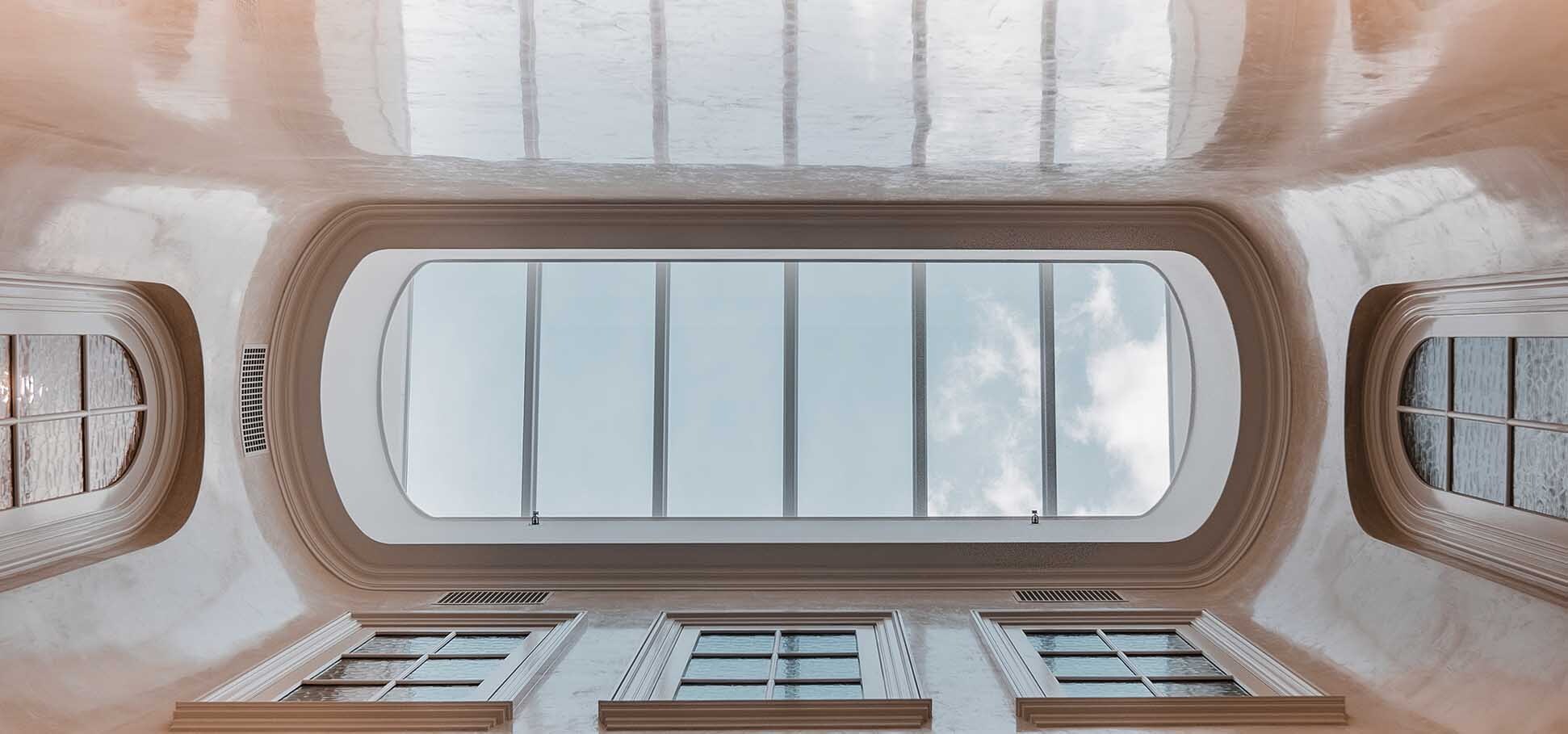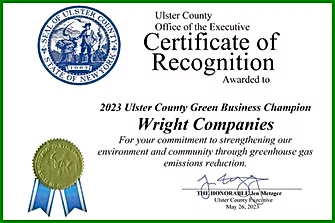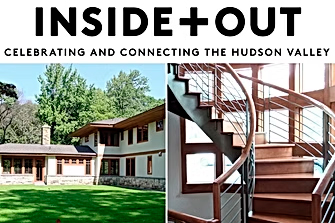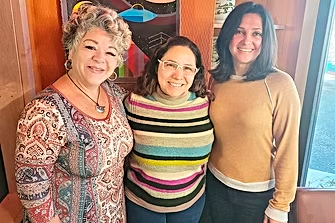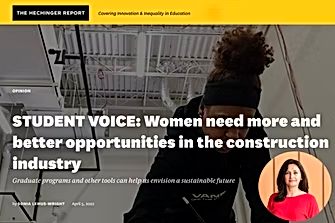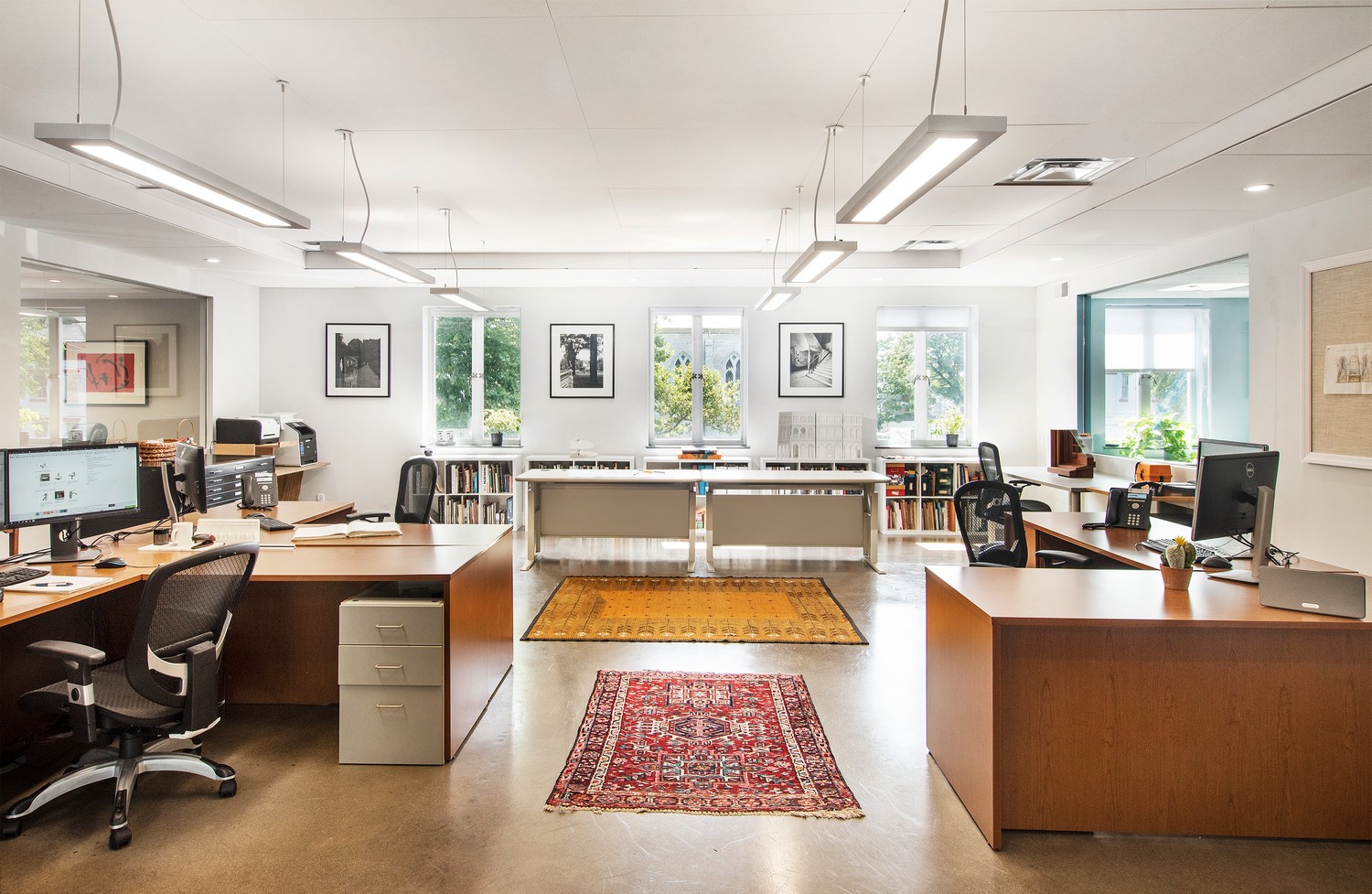What Sustainability Means in Architecture Today
At Wright Architects, we believe that sustainable architectural design is more than a trend—it’s a philosophy that informs every detail of the buildings we design. Sustainability is not a single product or system; it’s an integrated mindset that drives how we shape space, interact with natural forces, and design for both beauty and longevity.
We focus on reducing a building’s environmental impact throughout its lifecycle. That means sourcing smart materials, using site-responsive design, integrating energy efficiency, and planning for how the building will evolve over time. Especially in New York City, Kingston, and the Hudson Valley—where historic context and modern needs intersect—this thoughtful approach leads to more resilient, comfortable, and responsible architecture.
Our goal is to create spaces that live well—for the people inside and for the communities around them. A truly sustainable building supports well-being, reduces waste, and responds to both present and future needs. And as architects, we believe that designing with this awareness isn’t just a service—it’s a responsibility.
Our Philosophy: Longevity as Sustainability
At Wright Architects, we believe the most sustainable buildings are the ones that last—functionally, aesthetically, and environmentally. That’s why longevity is the cornerstone of every project we take on. Designing with longevity in mind doesn’t just mean using durable materials; it means making decisions that hold up over decades, not just for today’s trends or building codes.
We begin every project by thinking well into the future. How will this space age? How will it be maintained? What will it require in 10, 25, or even 50 years to remain comfortable, functional, and efficient? By taking a long-term view, we create buildings that age gracefully and require less energy and fewer resources to maintain.
This approach informs every layer of our design process. Window placement is not just about views, but about solar gain and heat retention. Roof orientation may inform photovoltaic integration years down the line. Mechanical systems are selected not just for performance, but for their upgrade paths and service life. These aren’t afterthoughts—they’re part of our foundation.
We also consider how spaces will be used over time. A home office that can become a guest suite, a mudroom that can adapt into a pantry, or mechanical closets sized to accommodate future upgrades—this kind of flexible planning extends the relevance of a home without costly remodels later.
From the materials we choose to the building systems we integrate, everything is filtered through the lens of long-term performance. And because we work across a wide range of climates and contexts—from brownstone-lined streets in Brooklyn to off-grid homes in the Hudson Valley—we understand how to design for specific conditions while maintaining timeless quality.
Longevity is not a luxury—it’s a necessity in sustainable design. When a building is built to last, it needs fewer resources to operate and less energy to fix. It becomes a source of pride and permanence, not a disposable product. That’s the kind of value Wright Architects is proud to build into every project.
Passive Design in Practice
Passive design is one of the most effective tools we use at Wright Architects to reduce a building’s energy demand before any systems are installed. It’s not an add-on — it’s the backbone of sustainable architectural design. By leveraging the natural characteristics of a site and climate, we create spaces that are inherently efficient, comfortable, and resilient with minimal mechanical intervention.
In practice, passive design begins with thoughtful orientation. Whenever possible, we position living areas to face south to maximize winter solar heat gain, while using roof overhangs, exterior shading, or strategically placed trees to limit overheating in summer. This balance helps regulate indoor temperatures without relying heavily on air conditioning or heating.
We also use thermal mass—materials like concrete, stone, or brick that absorb and slowly release heat—to stabilize indoor temperatures. In the Hudson Valley, where seasonal temperature swings are pronounced, this strategy can significantly cut energy use while improving comfort.
Ventilation is another passive element we prioritize. Cross-ventilation through operable windows, vented skylights, and properly placed interior openings can reduce the need for air conditioning. Natural ventilation not only saves energy but also supports healthier indoor air quality—a benefit we find increasingly important in urban and rural environments alike.
Glazing strategies play a huge role. We specify high-performance windows that limit heat loss while still allowing daylight to fill the space. In many cases, these windows exceed code requirements for insulation and thermal bridging, supporting our goal of long-term efficiency. And by designing with daylight in mind, we reduce dependence on artificial lighting—further lowering operational energy use.
Each of these techniques—solar gain, ventilation, thermal mass, daylighting—is context-specific. What works in a Catskills retreat may not apply to a Brooklyn townhouse. That’s why passive design isn’t a checklist—it’s a tailored strategy. Wright Architects analyzes every site and program individually to craft the most effective passive solutions possible.
And while these methods may seem subtle, their impact is profound. Passive design reduces long-term operational costs, extends the life of mechanical systems, and contributes to a smaller carbon footprint. For clients interested in low-maintenance, high-comfort, and future-ready homes, it’s the smartest place to start.
Materials That Matter
Material selection is one of the most powerful ways to align design with long-term sustainability. At Wright Architects, we consider the materials we specify not just for their aesthetics and performance, but for their environmental impact, health profile, and contribution to a building’s life cycle.
Our approach focuses on materials that are:
- Durable and low-maintenance – We avoid short-lifespan materials that degrade quickly or require frequent replacement. Instead, we choose finishes and assemblies designed to last, even in the demanding climate conditions of New York and the Hudson Valley.
- Locally sourced when possible – Regional stone, reclaimed wood, and domestic cabinetry reduce transportation emissions and support the local economy.
- Low in embodied energy – We prioritize materials that take less energy to produce, like FSC-certified wood or high-recycled-content steel and insulation.
- Non-toxic and VOC-free – Indoor air quality matters deeply to us. We select paints, sealants, adhesives, and finishes that meet or exceed environmental certifications like Greenguard or Declare labels.
For clients interested in minimizing their carbon footprint, we also consider cradle-to-cradle principles—evaluating how a material can be reused, repurposed, or responsibly returned to the environment after its useful life.
Blending New with Old in Historic Homes
When working on a NYC brownstone renovation, we frequently balance preservation with performance. Original hardwood floors, moldings, and brick walls can often be salvaged, restored, and reintegrated into the updated design. These materials not only contribute to the story and texture of a space—they reduce waste and preserve embodied energy.
To complement these older elements, we discreetly integrate modern materials behind the scenes:
- Spray foam or mineral wool insulation in rooflines and wall cavities
- New triple-glazed windows with historically appropriate frames
- Structural sheathing and sealants that improve air tightness while staying invisible
The result is a space that honors the past while embracing the future—architectural continuity paired with modern performance.
Designing for Health and Wellness
Today’s clients are increasingly aware of how their homes impact their health. At Wright Architects, we treat material selection as a wellness decision. We steer clients toward non-toxic flooring, cabinetry without added formaldehyde, and moisture-resistant assemblies that reduce the risk of mold or allergens. Our designs create not just sustainable homes—but spaces that feel good to live in, breathe in, and grow in.
Smart Systems for Smarter Living
While passive design forms the foundation of energy efficiency, integrating the right mechanical and technological systems brings it to life—and keeps it flexible for decades to come. At Wright Architects, we guide our clients through system selections that enhance comfort, reduce waste, and prepare their homes for the future of energy.
We don’t over-specify, and we don’t chase trends. We recommend systems based on long-term value, ease of maintenance, and compatibility with each client’s lifestyle and energy goals. Smart systems should make life easier—not more complicated.
High-Performance Mechanical Solutions
Depending on the scale and type of project, we frequently integrate:
- Heat Recovery Ventilators (HRVs) or Energy Recovery Ventilators (ERVs)
These ensure fresh indoor air without sacrificing heating or cooling efficiency—a critical component of modern, airtight homes. - High-efficiency HVAC systems, including variable-speed heat pumps
Especially useful in full electrification scenarios, they provide precise temperature control with low operational costs. - Induction cooking systems
Safer and more efficient than gas, and increasingly expected in modern, eco-conscious homes. - Smart thermostats and zoning controls
Allow users to fine-tune comfort and monitor usage through intuitive apps and automation. - On-demand water heating
Compact and efficient, these systems reduce energy use and free up valuable square footage.
We also consult on battery-ready electrical panels, EV charger integration, and load-shedding technology for resilience and long-term adaptability.
Preparing Homes for Electrification
More clients are asking how to reduce dependence on fossil fuels—not just for environmental reasons, but for economic ones. Electricity is increasingly the most flexible and cleanest energy source available in New York, especially as state and federal policy moves toward greener infrastructure.
We help prepare homes for full or phased electrification, including:
- Running conduit for future solar panel installations
- Sizing electrical panels to accommodate heat pumps and induction appliances
- Ensuring roof and orientation conditions can support solar capture
These elements don’t have to be installed all at once. But by planning ahead during design and construction, we make future upgrades seamless and cost-effective.
According to the U.S. Department of Energy, homes that adopt these high-performance strategies not only lower their carbon impact but also gain insulation from rising energy prices and grid volatility. That’s why we view every system integration as a step toward both environmental stewardship and long-term asset protection.
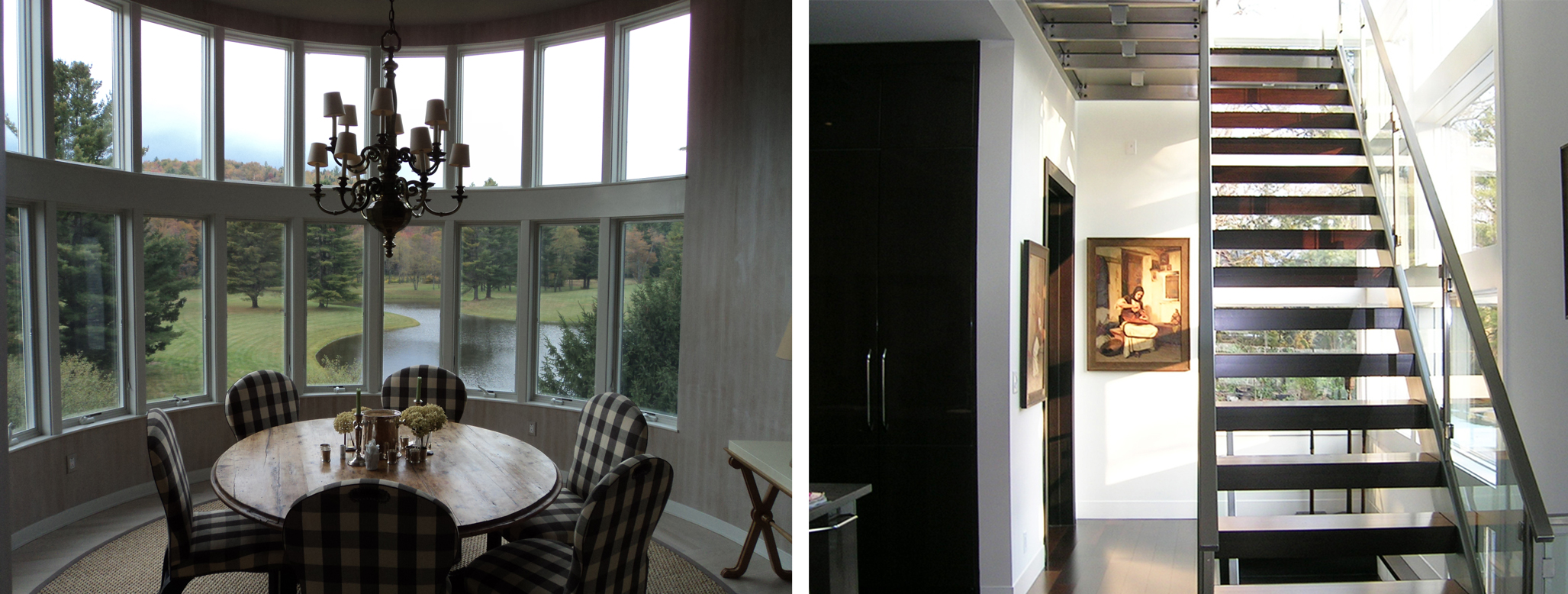
Simplicity Over Gimmicks
Not every system labeled “smart” adds value. At Wright Architects, we help clients avoid unnecessary complexity or systems that won’t be supported in five years. Instead, we focus on proven technologies that are easy to use, future-ready, and built to last.
Smart architecture isn’t just about automation—it’s about making the right long-term choices. And those start with an integrated, full-service approach to design and planning.
Navigating NYC’s Unique Sustainability Challenges
New York City presents one of the most complex design landscapes in the country. Dense zoning overlays, landmark restrictions, aging building stock, and space limitations make sustainable design both more difficult—and more necessary. At Wright Architects, we have decades of experience helping clients navigate these challenges while delivering elegant, energy-efficient spaces that comply with local codes and preserve architectural integrity.
Working with Landmark Properties and LPC Regulations
Many of our clients own buildings within landmarked districts—from classic brownstones to prewar co-ops on the Upper East Side. These properties require an extra layer of review from the Landmarks Preservation Commission (LPC). Integrating sustainable features like insulation, new windows, or solar panels in these contexts demands both design sensitivity and technical strategy.
We work closely with LPC staff to:
- Preserve visible exterior elements while upgrading performance behind the scenes
- Submit documentation and materials that demonstrate respect for historic fabric
- Advocate for performance improvements that align with LPC’s evolving guidelines
Our team often blends passive strategies, interior system upgrades, and non-visible exterior enhancements to satisfy LPC while still meeting our sustainability goals.
Navigating Dense Zoning and Code Requirements
NYC zoning can be especially tricky when introducing sustainable systems like green roofs, solar arrays, or mechanical upgrades that affect building height and massing. By conducting early zoning analysis and collaborating with consultants, we resolve potential conflicts before they derail timelines or budgets.
In many cases, we refer directly to resources from the NYC Department of Buildings to understand how energy code requirements intersect with site-specific restrictions. We often coordinate with engineers and expeditors to ensure DOB approval of upgraded mechanical systems, electrical capacity, and ventilation plans.
Upgrading Older Buildings with Limited Flexibility
Many New York City buildings are structurally inflexible or space-constrained. That doesn’t mean they can’t be made sustainable. We regularly retrofit:
- Wall cavities for added insulation without compromising original details
- Interior mechanical shafts to accommodate ERVs or ductless mini-split systems
- Window assemblies that maintain appearance while drastically improving U-values
For us, these aren’t barriers—they’re design challenges that demand creativity and experience.
A Regional Perspective
Outside the city, our projects in Kingston and the Hudson Valley face a different set of sustainability challenges: larger footprints, off-grid goals, and site-exposed weather patterns. But the same principles apply: contextual design, material efficiency, and long-term thinking. Whether in Manhattan or Beacon, sustainable architecture isn’t a trend—it’s a tailored solution.
Wright Architects bridges urban complexity with rural opportunity, offering clients across New York a unified, adaptable approach to green design.
The Role of a Full-Service Architect in Sustainable Projects
Sustainability isn’t just about specifying solar panels or upgrading insulation—it’s about aligning every phase of the project around long-term performance and responsible design. That’s where the role of a full-service architect becomes essential. At Wright Architects, we manage every step of a sustainable project so that no part of your vision is compromised—and no opportunity for efficiency is overlooked.
As a full service architect in New York, we act as your advocate from the very beginning. That includes:
- Conducting zoning and feasibility studies with sustainability in mind
- Engaging engineers and consultants early to align energy goals with building systems
- Navigating permit and code requirements—including NYC Energy Code and LPC reviews
- Selecting materials and assemblies that balance budget with long-term performance
- Preparing construction documents that clearly define sustainability standards
- Managing contractors to ensure green features are implemented as intended
This integrated role allows us to protect your priorities—whether you’re aiming for a low-carbon build, full electrification, or just lower utility costs over time.
Avoiding the Sustainability “Drop-Off”
In traditional project models, green design strategies can get diluted or lost during handoffs between designers, engineers, and contractors. By keeping all stakeholders aligned from the start and staying deeply involved during construction, we ensure that energy strategies and sustainability measures remain intact—never value-engineered out or compromised by miscommunication.
With our full-service model, we’re able to make quick decisions on site, solve problems collaboratively, and course-correct as needed—all while keeping your goals front and center.
Turning Strategy Into Structure
We take pride in translating abstract sustainability goals into tangible design moves. For example:
- A family planning for electrification can benefit from discreet conduit pathways installed during framing—even if solar or heat pumps come later.
- A client interested in reduced carbon impact can prioritize reclaimed flooring, mineral wool insulation, or low-carbon concrete mixes that support broader climate goals.
- A developer targeting long-term resale value can highlight energy-efficient architecture in New York as a competitive advantage in the marketplace.
It’s not about adding features—it’s about making every architectural decision serve a larger purpose.
Wright Architects is here to make that process seamless. Sustainability becomes not just a goal—but a well-executed outcome.
Why Sustainable Architecture Is Good Business
Sustainability isn’t just a design philosophy—it’s a smart investment. At Wright Architects, we help clients understand that environmentally responsible choices often lead to long-term financial benefits, increased property value, and enhanced quality of life.
Energy-efficient buildings consistently outperform conventional ones when it comes to operational costs. From high-performance insulation to solar-ready infrastructure, the choices we make during design and construction directly affect monthly utility bills for years to come. These savings aren’t hypothetical—they’re measurable, reliable, and increasingly expected in today’s market.
In New York, where climate regulations are tightening and energy costs remain high, sustainability isn’t just preferable—it’s strategic. Choosing materials and systems that reduce energy loads can help avoid costly retrofits later, while future-proofing your property as standards evolve. For clients planning to own or hold their buildings long-term, the return on investment becomes even clearer.
More importantly, sustainability adds resale value. Buyers are looking for homes and buildings that reflect their values—efficient, healthy, and low-maintenance. A property that incorporates eco-friendly home design NYC strategies—like passive ventilation, non-toxic materials, or solar infrastructure—isn’t just a talking point; it’s a market differentiator.
Developers benefit too. Properties that meet or exceed baseline energy code requirements are more attractive to conscious renters and buyers. Features like improved indoor air quality, daylighting, and efficient heating and cooling systems are no longer viewed as optional. They’re part of what defines a high-performance building—and Wright Architects helps our clients embed those features from the start.
Our work reflects what we believe: sustainable design isn’t a cost—it’s an asset. And when done well, it elevates every part of the project, from financial performance to the daily experience of the people who live and work inside.
Helping Clients Understand Their Options
Sustainable design can be complex—but it doesn’t have to feel that way. One of the most important roles we play at Wright Architects is helping clients make sense of their options. We start by listening: What are your priorities? What’s your lifestyle like? How long do you plan to live in the space? From there, we shape a strategy that’s clear, cost-conscious, and tailored to your goals.
We break down the possibilities—from passive heating techniques and daylighting strategies to all-electric HVAC systems and solar infrastructure. And we explain what can be done now versus what can be prepped for the future. For example, a project may not install solar panels right away, but we’ll still run conduit through the framing to make future installation simple and affordable.
Many clients are surprised to learn that sustainable architectural design doesn’t always cost more—it just requires planning. In fact, many high-performance materials and systems pay for themselves through lower utility bills, fewer repairs, and stronger resale appeal. We walk through these trade-offs together, offering insight at every stage.
We also guide our clients through evolving building codes, helping them understand how today’s decisions will position them for future compliance. With energy regulations becoming stricter each year, designing ahead of the curve is not only smart—it’s essential.
When questions arise, we’re here with answers. Not jargon. Not sales pitches. Just the guidance you need to move forward with clarity and confidence.
Design-Build and Sustainability: A Natural Fit
At Wright Architects we offer a design-build architecture firm model for Hudson Valley that pairs especially well with sustainability goals. In this model, we manage both the design and construction aspects of the project, acting as a single point of contact and responsibility.
Why does this matter for green design? Because sustainability lives in the details. When design and construction are managed separately, those details can get lost, compromised, or misunderstood. When we lead the entire process, sustainable strategies are carried all the way from concept to construction—with no handoffs, no dilution, and no surprises.
In a design-build model:
- Systems are integrated earlier in the design process
- Contractors understand sustainability goals from day one
- Materials can be sourced efficiently and responsibly
- We maintain control over installation quality and compliance
This is especially valuable when installing performance-sensitive systems like ERVs, all-electric HVAC, or specialized insulation assemblies. We ensure that green intentions become green results—on site, not just on paper.
For clients who want to minimize risk, maintain schedule certainty, and protect every detail of their sustainable vision, design-build is an ideal solution.
The Emotional and Functional Benefits of Sustainable Design
Sustainability isn’t just about metrics—it’s about experience. A well-designed, energy-efficient home feels different. There’s less noise. The air is fresher. The light is softer. The temperature stays steady without constant adjustment.
These are the subtle, day-to-day benefits that often matter most to our clients. At Wright Architects, we believe that good sustainable design should elevate the way you live. It should make your space healthier, calmer, and more responsive to your needs—while still being beautiful to look at and built to last.
Clients often tell us that their favorite parts of a project aren’t always the big-ticket items—it’s the quiet comfort of natural ventilation in spring, the glow of afternoon light in a passive solar living room, or the peace of mind that comes from knowing their home is built responsibly.
When sustainability is done well, it isn’t obvious. It just feels right.
Ready to Build Something Smarter?
If you’re planning a renovation, building a new home, or simply exploring what’s possible, Wright Architects is here to help you build smarter. Sustainability isn’t something we tack on—it’s built into every line we draw, every material we specify, and every strategy we recommend.
Our team will guide you through zoning, approvals, design, and construction with clarity, care, and long-term value in mind. Whether you’re designing an urban brownstone upgrade or a rural off-grid retreat, we tailor every detail to your goals.
Explore our sustainable architectural design services to see how we can help bring your vision to life—or contact us to start a conversation.
FAQ
What is passive design and how does it save energy?
Passive design uses a building’s orientation, layout, and materials to regulate indoor temperature naturally—reducing reliance on mechanical heating and cooling.
Can sustainability be incorporated into historic renovations?
Absolutely. We frequently blend modern systems with original materials in NYC brownstone renovation projects—preserving character while improving performance.
Is sustainable architecture more expensive?
Not always. Many sustainable features lower utility bills and maintenance costs over time, providing long-term savings. We help clients evaluate what makes sense for their budget.
What if I can’t afford everything up front?
We design with future upgrades in mind—so you can install solar, high-performance HVAC, or other systems later with minimal disruption.
How does Wright Architects stay up-to-date with green building standards?
We regularly reference evolving code from sources like the NYC Department of Buildings and U.S. Department of Energy to keep our designs compliant, competitive, and future-ready.

